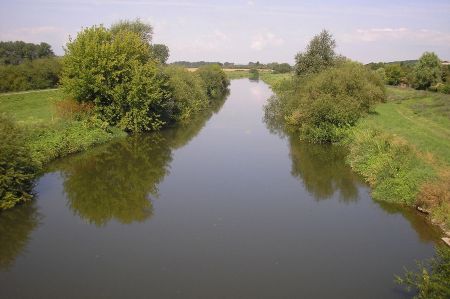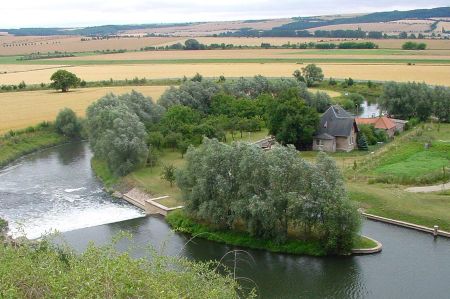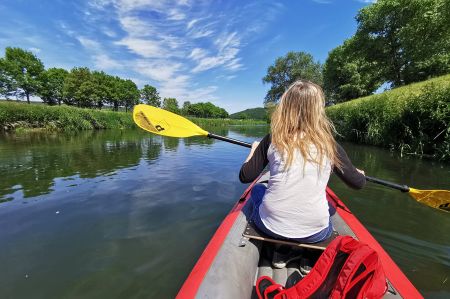Paddling on the Unstrut - from Roßleben to Kirchscheiden
- Written by Portal Editor
Another event was on our schedule this weekend because we wanted to do a paddling tour on the Unstrut, a smaller tributary to the Saale, which we had had on our to-do list for a long time.
Still relatively inexperienced in determining the length of such a paddling tour, Freyburg was initially considered as the destination, which we then roughly halved when we took a closer look at the map and the recognizable many loops of the Unstrut. So we decided to do the tour from Roßleben landing stage to Kirchscheiden, up to the landing stage, in the end it was also too long, as we had to find out on the way, especially since we couldn't start until around noon. Hardly any current in the river then promised that continuous paddling was announced. In the implementation, we parked a vehicle in Kirchscheiden directly at the small campsite or at the canoe landing stage, which was very busy with paddlers at the time. Then we continued with the second car to Roßleben at our chosen starting point. Our Gumotex Palava was quickly inflated and lowered into the water and we were ready to go.
Unstrut - calmly flowing water means a lot of paddling work

Even the Gera, which drains the montane Thuringian Forest in the upper reaches, only reaches just under 7 l/s km², while the rivers draining the Werra on the windward side of the mountains carry more than twice the amount of water per square kilometre of catchment area. In our case, it is the resin that ensures that the amount of water is only small, which means more work for us on paddle strokes, since the flow rate is of course also low as a result. Well, life is just a learning process!
Lock at Wendelstein Castle - then Memleben and more

No problem for two. So you don't have to worry about lock times. The ruins of Wendelstein Castle, on which there are still inhabited buildings, are located directly on the river. A little later we reach the town of Memleben, where there was an Ottonian imperial palace from the 10th century, which was often visited by Heinrich I and Otto the Great.
In today's village you can still find the foundation walls of the associated monastery and the partially preserved monastery church from the 13th century. A permanent exhibition provides information about the history of the Palatinate and the monastery. A stopover is a must for newcomers to the region.
Unfortunately closed at the moment due to construction work. A little later we pass the Unstrut Tal Bridge on the new Erfurt-Leipzig/Halle ICE line near Karsdorf, which went into operation in December 2015 and is considered the second longest railway bridge in Germany.
Then comes the baroque castle of Burg cuttings, in which the later Countess Cosel lived for several years, unfortunately not open to the public at the moment.
Steep slopes of gypsum, sandstone and shell limestone in the Unstrut valley
As the eastern foothills of the Bottendorferhöhe, it is one of the bulges of the Zechstein, which comes to light here due to the northern edge fault of the Hermundurian floe. Between Memleben and Nebra, the Unstrut flows through a valley cut into the Middle Buntsandstein, whose quarry walls bear witness to centuries of building stone extraction.
The valley widens near Karsdorf, the soft slate of the Upper Buntsandstein was partially washed out by the river. The lime is extracted as a raw material in the Karsdorf cement works.
The Unstrut gains its special charm from the contrast between river meadow biotopes and adjacent dry soil. The wet banks are lined with willows, poplars and ash trees. Dry and semi-dry grasslands can be found on the dry, calcareous soils, and rare orchids such as the pale and purple orchid, bee, spider and fly orchid, lady's slipper or the large twig grow in sheltered places such as in the Dead Valley nature reserve.
Sluice near Tröbsdorf and landing stage at Kirchscheiden
The lock at Tröbsdorf was similar to the lock at Wendelstein, although there is a telephone number if you want to be locked. Which is certainly an adventure. It goes without saying that certain times have to be observed here. We wanted to move on as quickly as possible, although we met other canoeists here who also offered to help carry the canoe.
Please read as well:
